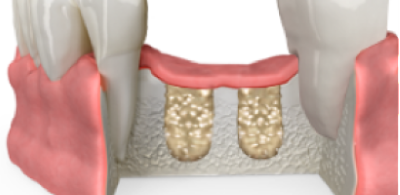
What is a bone graft?
A bone graft is used to recreate bone and soft supporting tissues lost due to gum disease. It’s also called regenerative surgery.
What to expect during the procedure?
Regenerative surgery is a treatment for the gum disease called periodontitis. People with periodontitis lose gum coverage and bone support around their teeth. Regenerative surgery regrows these lost tissues. The goal of this surgery is to coax the body into rebuilding the bone and other structures that attach a tooth to the jaw. It is done by a periodontist, a dentist who specializes in diagnosing and treating gum disease.
- First, your dentist will separate the gums from your teeth to gain access to the roots and bone.
- The roots will be thoroughly cleaned. The holes (defects) in the bone will be filled in with a graft material.
- Then they will be covered with a physical barrier. Barriers are used to cover the grafting material in the early stages of healing. They also prevent the gums from growing into the bony defect. Barriers are made from human skin, cow skin or synthetic materials.
- After the graft is in place, the gums will be put back over the treated site and stitched into place. The site also may be covered with a bandage known as a periodontal pack or dressing.
During the next six to nine months, your body fills in the area with new bone and soft tissue. In effect, this reattaches the tooth to your jaw.
What to expect after the procedure?
Your dentist will most likely prescribe a pain medicine to be used after surgery. It is important to continue brushing and flossing the rest of your mouth normally. Mouth rinses containing chlorhexidine are also commonly prescribed after periodontal surgery. They slow down the growth of plaque by killing the bacteria and helping your mouth heal. You may also have some swelling after surgery which can be reduced by applying an ice pack to the outside of your face in the treated area.
